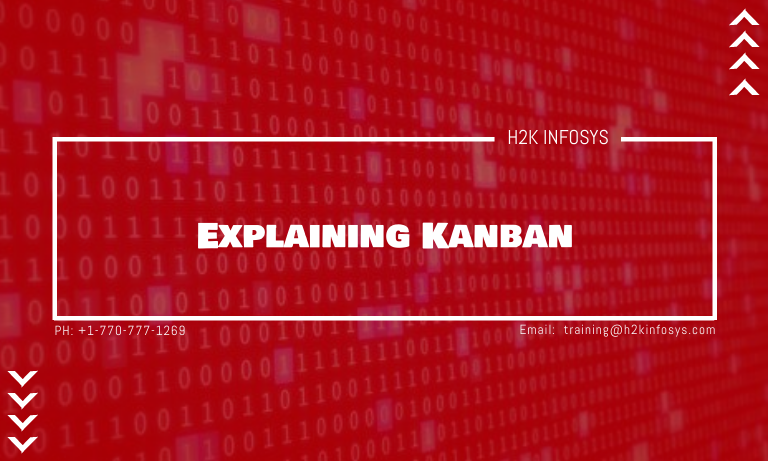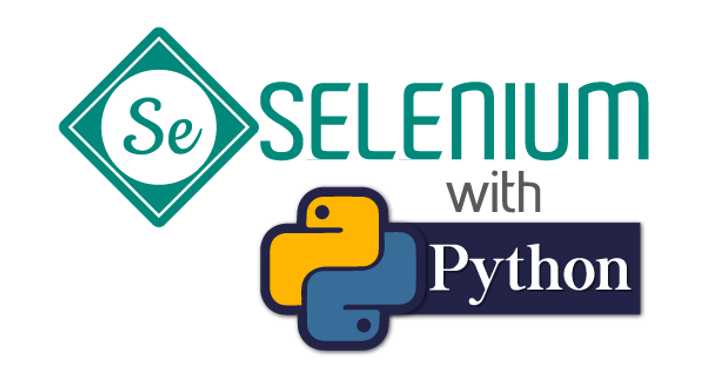What is Kanban?
Kanban is a well-known development framework in the agile software development methodology. It provides a simplified method of analyzing the team’s activities and work capacity. Physical and digital boards are commonly used to enable team members to interpret the actual state of the project they are working on.
Kanban was developed in the 1940s at Toyota. The Japanese term kanban means “billboards.” Columns and story cards make up the Kanban board. The columns are nothing more than workflow states, and the cards are nothing more than a precise description of the actual task that a team member is performing.
When should kanban be utilized?
The following are some of the benefits of using the Kanban development method:
- Kanban can be used in any industry, but it works particularly well in software development.
- Kanban project management aids in increasing the team’s efficiency.
- It’s a system that works by pulling people in. As soon as a person is free, they are assigned tasks.
- If you want to release your job at any moment, Kanban is the way to go. It necessitates the use of git branches, but it’s achievable.
- When you need to change priorities on the fly, Kanban is the way to go. All you have to do now is move this story to the top of your to-do list.
- It should be used when you need to visualize your work and see how your tasks are progressing visually.
Kanban Cards
The method of Kanban suggests work visualization. It recommends using both a physical and a digital boar
The Kanban cards are important components of the Kanban board since they reflect the team’s current work. These cards will provide the following information:
- Priority
- Owner
- Type
- The deadline
In a Kanban board, a column represents the job level, and you can set a WIP (Work in Progress) limit for it. The WIP cap refers to the maximum number of cards that can be held on that column.
Since Kanban project management is built on a pull system, a developer will pull a card from the to-do column and place it in the dev column whenever he or she is available.
Kanban Board
Kanban Board is an agile tool for managing tasks for personal and business uses. Kanban Board helps execute projects. It’s a physical (JIRA) or digital (JIRA) board that helps teams envision their work at various levels and processes. It also aids in the representation of job levels using columns and cards.
It has columns that reflect the state of the job, such as
- To-do,
- Development
- Testing
- Done
Each of these columns can have cards less than equal to the work-in-process limit. These cards are the representations of the real work.
You can use positive numbers to restrict work-in-progress, and this limit number can be placed at the top of the columns on both physical and digital Kanban boards. Every person on the team can monitor the status of his card, and the whole team can envision the workflow. We’ll learn about Kanban Workflow next in this Kanban tutorial.
Kanban Workflow
Kanban Workflow is a series of measures that allow teams to identify clear policies and values in Kanban. It sets out the rules and protocols, while work is underway at different levels of development and delivery cycles. The Kanban workflow consists of step-by-step procedures from the start and completion of a specific task.
The basic principle that Kanban follows is “Stop starting, start finishing.” With the support of WIP limits, more work is completed. Customizable Kanban workflows and states are accessible in every advanced tool like JIRA.
Below are the fundamental states that many software teams are following to manage their workflow.
| States | Definition |
| To-do | In this state, tasks arrive for the first time. |
| Ready for analysis | Analyze the job and fill in all the conditions. |
| Ready for development | After the analysis is complete, the development will begin. |
| In the development | Tasks are in the process of being developed. |
| Ready for testing | The development phase is now complete, and testing will begin. |
| In the testing | Tasks are being put to the test. |
| Ready for release | Testing is now final, and the product can be released. |
| Released/Done | Released |
The Four Kanban Principles
The four major Kanban principles are mentioned below:
1. Begin with what you have now: The Kanban system recommends operating in small increments and starting with what you have right now. Since one of the practices is to change constantly, you must continuously improve the system.
2. Agree to Follow Incremental, Evolutionary Reform: Kanban prefers making small changes to the procedure rather than making a major change all at once.
3. Maintain Current Processes, Roles, and Responsibilities: Once again, begin with what you have now and gradually adjust the method, roles, and responsibilities.
4. Promote Leadership at All Levels: Everybody can be a leader and contribute ideas to make the Kanban system more effective. This is not a management-level operation, and even the youngest member of the team will lead.
The Six Kanban Core Practices
The six core practices of Kanban are as follows:
1. Visualize the workflow: To visualize the workflow, this principle recommends using a Kanban board (physical or digital). Each team member must see his or her card as well as the cards of his or her teammates. you can arrange your cards in various columns. It creates a lot of accountability inside the team which makes it easy to deal with obstacles.
2. Limit work in progress: Kanban is a pull-based method that increases a team’s productivity by limiting work in progress and having assignments that the team can accomplish in the allotted time. This WIP limit is in effect from the start to the finish of the project. This WIP limit is in effect from the start to the finish of the workflow. A positive integer can be used to add the limit on top of the column.
3. Emphasis on flow: this principle focuses on flow and any interruptions. If there are any disruptions or obstacles, they must be removed.
4. Explicit Policies: Policies should be developed in a group to minimize rework and concentrate on the areas that need improvement or are most successful.
5. Feedback Loop: In Kanban, feedback loops are important. It occurs not only inside the team, but also between different teams, coaches, and other individuals. This contributes to the Kanban system’s overall health.
6. Continuous Improvement: it is the core principle of the Kanban method. It suggests that you should still change the procedure and this can result in greater performance.
Pull Based System
Kanban is a pull-based system where duties are being pulled rather than moved. As soon as you have finished your current card, you will draw a new card from the previous column of the Kanban board.
With the WIP limit, Kanban is helping to increase lead-time and cycle time. There should be the least possible difference between the two timings. For instance, we have 5 programmers and only 1 tester; what’s going to happen in this case? There will still be a lot of cards that need checking, and they’re going to be sitting idle and waiting.
To address the above concerns while also increasing performance, Kanban employs a pull-based strategy with WIP limits, in which only a small number of cards are pulled.
As a result, after a tester has completed his current assignment, he can pull a task from the “ready for testing” level. You won’t have many unattended cards in the Kanban workflow with the WIP limit in Kanban columns (development stages).
The pull-based method also aids in determining the team’s optimal velocity. The team would do well if the right velocity is in position.
Lead Time and Cycle Time
Lead time and cycle time are commonly used in the Kanban method; however, there is a distinction between the two that must be understood to prevent misunderstanding.
| Lead Time | Cycle Time |
| The time between the task’s arrival in your workflow and its exit from the workflow, indicating that it has been released, is known as lead time. | The period between the arrival of the task in the “in progress” state and the arrival of the task in the “ready for release” state is known as cycle time. |
Cycle Time = Work in Progress/Throughput
It’s also important to note that the period between being ready for release and then releasing should not be included.
The difference between lead time and cycle time should be as minimal as possible in an optimal scenario, and Kanban measures lead and cycle time historical data using a cumulative flow diagram (CFD).
Cumulative Flow Diagram (CFD)
CFD is a chart that can be used in all major workflow management tools, such as JIRA. This graph depicts the total number of work cards/tasks that have joined the workflow as well as the total number of completed cards/tasks over time.
It helps to predict the average lead time and cycle time for a given period.
The CFD diagram will show you signs or problem areas that need to be addressed. It is built on this diagram which will provide you with a clear depiction. You can adjust the lead time and cycle time of your team.
1. Lead Time: Which is the time between when a new card is added to the workflow and when it is removed.
2. Cycle Time: This refers to the time it takes for a card to go from being in a working state to be able to be released.
3. WIP: Work in progress (WIP) sets a limit on the number of work objects that can be assigned to each point of the workflow.
4. Throughput: This is the real performance, and it indicates how many cards were shipped in a given amount of time.
Throughput = Work in Process /Cycle Time
Limiting WIP(Work-in-progress)
WIP restricts the number of tasks/cards that a member of the team or a whole person can do at once in the Kanban development method.
The WIP limits ensure that the team’s work is stabilized and that the predictive nature of the system is increased, which is critical in a pull-based system. The decision to set a WIP limit is usually made by the team.
Reason for Setting Work in process limits
The following are some arguments to set WIP Limits:
- It lets teams realize their potential by focusing on getting tasks done when a person works on a single job at a time.
- It reduces cycle time and increases efficiency.
- It aids in the avoidance of tasks piling up (in waiting mode).
- It facilitates the flow of work and ensures that projects are completed on time.
- It also helps to overcome blockers as a person that does not switch between multiple roles.
Scrum Vs. Kanban
| Scrum | Kanban |
| Scrum Promotes effective planning. It begins with sprint planning and finishes with a sprint retrospective. There are several meetings to ensure the team is familiar with the next phase, goals, and learning from prior sprints. | Kanban is flexible enough to make improvements on the run. It implies that there is less resistance and that situations are more likely to change regularly. |
| It advises the set of sprint time measurements | For a visual representation of a team’s success over time, Kanban proposes graphs. |
| Scrum no longer demands team engagement. Rather, the sprint objectives and predictions are concerned. | Kanban is dependent on forecasting and time-boxing. |
| It promotes planning and thus estimates play an important part in Scrum | There are no compulsory estimated criteria in Kanban. |
| Each individual has his or her roles and duties. | Since there are no defined positions, there is a great deal of versatility in terms of individual obligations. |
| The length of the iterations/Sprints is fixed. This period will last anywhere from two weeks to a month. | Kanban is not a time-based system. This is calculated in terms of cycle times. |
| Teams are expected to put in a certain amount of effort. | Commitment is not required; however, it is a choice for teams. |
| In this approach, cross-functional teams are valuable since they can deal with any uncertainty that can create a bottleneck in the development of software. | It is important to have a specialized team. |
| Items cannot be added to the current versions. | If extra space is required, new items can be quickly added. |
| Only a single team owns the sprint backlog. | A Kanban board can be shared by several teams. |
| The deliverables are decided by the sprints that must be completed and ready for evaluation. | Products and processes are continually distributed as required. As a result, the testing and review processes run in parallel. |
| The development method for Scrum software focuses on the backlog. | The Kanban approach relies solely on the process dashboard. |
| Each team member has a particular task as the Scrum Master decides deadlines, the Product Owner sets priorities and targets, and the team members carry out production work. | A team should not have predefined roles. While a Project Manager will also be present, the team is expected to cooperate and work together. |
| For projects with shifting priorities, this is the best option. | Ideal for teams with well-defined goals that are unlikely to shift over time. |
| Measures production by sprinting using velocity. | Measures the production with cycle time or the exact time it takes to finish a project. |
| Scrum needs a full transition from the standard paradigm to the Agile Scrum model that will be implemented in the project. | Kanban does not allow for large-scale project shifts. |
| It is the optimal approach for projects with a broad range of priorities. | For teams with consistent priorities, this is the best option. |
| In Scrum, the whole team is committed to working together and completing the job to ensure professional development work. | Teams work together to accomplish results and shorten the time it takes to complete the process. As a result, the shortest period is one of the most important metrics of performance. |
| Scrum focuses on the timetables; additional elements cannot be added to existing iterations. | Since Kanban does not have fixed timeframes, it is more iterative. Thus, new objects can be constantly inserted as necessary capacity is available. |
| The overall work is performed by batches/Sprints. | The whole project is based on single-threaded work item flow movement. |
| The Scrum Master is a problem solver. | Kanban inspires everyone on the team to be a mentor and to share responsibilities. |
| Scrum is prescribing time-boxed iterations. | Kanban operates on a different timeframe for each iteration. |
| Scrum helps businesses save time and resources. | The Kanban process focuses on quality growth, reliability, and productivity. |
| Achieve stable and effective performance coordination at all stages. | The visual design of Kanban boards makes it much easier for team members to achieve their goals. |
| During the sprint analysis, projects are coded and reviewed | The visual design of Kanban boards means team members are far more able to achieve their goals. |
| Due to short sprints and daily reviews, it is easier to respond to constant changes. | It is planned for normal, steady production, and big shifts in customer demand will make Kanban fail. |
| The overall cost of the project is nominal, which may lead to a faster and cheaper outcome. | If a task is not properly calculated, the actual cost of the job will never be exact. In such instances, the task can be divided over several sprints. |
| This technique needs only seasoned team members. So, if the team is made up of individuals who are not experts, the job cannot be finished on schedule. | No defined timeframes are assigned to each process, but team members never get the sense of how much time they will take in each phase. |
| The Agile Scrum approach makes it possible to produce a reliable product at a planned time. | It is planned for daily, steady production, with large shifts in consumer demand that may cause Kanban to decline. |
| And if a team member leaves the team, the project schedule will never be disturbed. | If all of the team members leave during production, the development of the project will be adversely affected. |
| Daily meetings often irritate the members of the team. | The outdated Kanban Board will lead to issues in the development process. |
Conclusion:
- Kanban definition: Kanban is defined as an agile technique for developing software, automobiles, products, prescriptions, accessories, or some other manufacturing work.
- Kanban uses the Kanban board to envision the work. It uses columns as levels (to-do, dev, testing, etc.) and cards as work items.
- Kanban Approach promotes the visualization of the physical and interactive boards.
- Kanban is a pull-based method, and the cards are drawn from the previous stage to the current stage by team members.
- The Kanban approach uses the CFD diagram to consider the lead time and cycle time of the team. This graph allows teams to fill the void between these two timings and increase performance.
- Kanban development methodology, WIP restricts the amount of tasks/cards which a team member or a whole can operate on at the same time.
- WIP limits aims to achieve tasks when one person focuses on one goal at a time.





























One Response